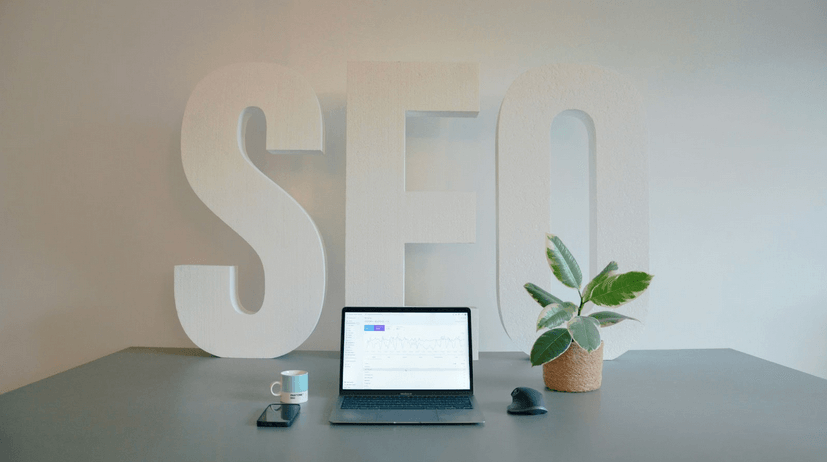Needing help with online marketing?
How AI-Powered Digital Signage Transforms Australian Retail and Boosts Local SEO
Share this post
Walk through Sydney's Pitt Street Mall at night and you'll witness something that would seem utterly alien to someone from just fifty years ago—massive screens that seem to watch you back, adjusting their messages based on who's looking.
Like deep-sea creatures with bioluminescent displays that shift and pulse to communicate, modern digital signs have evolved far beyond simple electronic billboards. They've developed a kind of intelligence that borders on the uncanny, reading crowds, predicting desires, and learning from every interaction.

Remember the last time you walked past a traditional billboard? Probably not. But I bet you remember that interactive display at Westfield that seemed to know exactly what you were interested in. That's the power of AI-powered signage—it doesn't just broadcast; it converses.
The transformation happening in the signage industry mirrors what we've seen in every other field touched by artificial intelligence. We're moving from one-way communication to dynamic dialogue, from mass messaging to micro-personalisation. And here's the kicker: these smart displays aren't just changing how we advertise—they're revolutionising how we understand and optimise for search engines.
Think of traditional signage as a megaphone, shouting the same message to everyone. AI-powered signage? That's more like having thousands of individual conversations simultaneously, each perfectly tailored to the listener.
Computer Vision and Audience Analytics
Let me paint you a picture of what's happening behind these seemingly magical displays. Using advanced computer vision—essentially giving screens the ability to "see"—these systems can detect incredible details about their viewers without being invasive or breaching Australian Privacy Principles.
The Technology Behind the Magic:
- Advanced cameras with AI processing detect general demographics (not individual identities)
- Mood detection algorithms gauge emotional responses to content
- Heat mapping tracks where people's eyes naturally gravitate
- Dwell time analysis measures engagement levels
Here's a real-world scenario: You're walking through Chadstone Shopping Centre with your kids. As you approach a digital display, it notices the general composition of your group—adults with children. Within milliseconds, the advertisement shifts from promoting a happy hour special to showcasing the latest family-friendly restaurant deals. Your teenager glances at another screen, which then displays trending sneakers from JB Hi-Fi rather than retirement planning services.
The Practical Benefits:
The beauty of this technology lies in its subtlety. Viewers get relevant content without feeling surveilled. Businesses achieve:
- Higher engagement rates (studies show personalised content gets 3x more attention)
- Better ROI on advertising spend
- Reduced ad fatigue among consumers
- More ethical targeting without personal data collection
Context-Aware Content and Real-Time Adaptability
But the intelligence of modern digital signs goes beyond just recognising who's watching—they understand the entire context of the moment.
Environmental Awareness:
These systems pull data from multiple sources:
- Weather APIs adjusting retail promotions in real-time
- Traffic patterns influencing message timing
- Local event calendars coordinating relevant content
- Social media trends capturing the cultural zeitgeist
I once consulted for a coffee chain operating across Melbourne that implemented smart signage across their locations. On a particularly scorching 40-degree summer day, their displays automatically pivoted from promoting hot lattes to featuring iced beverages—sales of cold drinks jumped 40% compared to locations with static menus. During a surprise afternoon downpour, the same signs shifted to promote their delivery app. That's the power of context-aware advertising.
The Ripple Effect:
This adaptability creates a cascade of benefits:
- Inventory moves faster when promotions match conditions
- Customer satisfaction increases with relevant suggestions
- Staff efficiency improves as signs handle basic information delivery
- Brand perception modernises through technological sophistication

From Foot Traffic to Search Data
Now here's where things get really interesting for Australian digital marketers. These AI-powered displays are creating an unprecedented bridge between physical and digital marketing efforts.
Think about it: for years, we've had incredible data about online behaviour—click-through rates, bounce rates, conversion paths. But what about the physical world? How do people actually behave in stores? What catches their attention? These smart digital signs are finally answering these questions, and the implications for SEO are profound.
Creating Physical SEO Intelligence:
The data flow works like this:
- Smart displays track which content generates the most engagement
- This information reveals real-world consumer preferences
- These insights inform online content strategy
- Local SEO efforts become data-driven rather than assumption-based
Let me share a fascinating case study. A sporting goods retailer in Brisbane discovered through their smart signage analytics that yoga equipment displays had triple the dwell time of running gear, despite running products dominating their online presence. They adjusted their Google Business Profile, local landing pages, and content strategy to emphasise yoga—local search traffic increased by up to 60% within two months.
The Feedback Loop Revolution:
This creates a powerful circular improvement system:
- Physical behaviour informs digital strategy
- Digital campaigns drive foot traffic
- In-store displays measure campaign effectiveness
- Continuous optimisation based on real-world data
Measuring In-Store Engagement
For the first time in Australian retail history, we can measure physical engagement with the same precision as online interactions.
Metrics That Matter:
Smart signage systems now track:
- Impression counts (how many people saw the display)
- Engagement duration (how long they looked)
- Conversion actions (did they enter the store after viewing?)
- Path analytics (which department did they visit next?)
This isn't just about counting heads—it's about understanding behaviour patterns that directly inform your SEO and content strategy. When you know that customers who engage with certain display content are 70% more likely to make a purchase, you can optimise your online presence to feature similar messaging.
Bridging the Attribution Gap:
One retailer I worked with in Sydney's CBD used QR codes on their smart displays that adapted based on what content was shown. Someone watching a display about winter coats would see a QR code leading to a landing page specifically about those products, complete with local inventory information. This created a measurable link between physical display engagement and online behaviour—pure gold for understanding the customer journey.
The integration possibilities are endless:
- Geofenced mobile ads triggered by display interactions
- Email campaigns customised based on in-store engagement
- Social media retargeting informed by physical behaviour
- Content creation guided by real-world interest data
Starting Small and Scaling Smart
You don't need a Westfield-sized budget to leverage AI-powered signage. Small Australian businesses are finding creative ways to implement this technology:
- Entry-level solution : Basic demographic detection cameras paired with content management systems (from $2,000 AUD + GST)
- Mid-tier approach : Integration with Bureau of Meteorology APIs and social media for dynamic content
- Advanced implementation : Full AI suite with predictive analytics and cross-channel integration
Privacy and Ethics: Getting It Right
The elephant in the room? Privacy concerns. In Australia, successful implementation of smart signage requires transparent, ethical practices that comply with the Privacy Act 1988 and Australian Privacy Principles:
- No personal identification or data storage
- Clear signage about camera usage as required by Australian law
- Opt-in benefits for willing participants
- Focus on aggregate rather than individual data
- Regular Privacy Impact Assessments
- Compliance with Office of the Australian Information Commissioner (OAIC) guidelines
Major Australian retailers are already seeing impressive results. Harvey Norman has implemented smart signage in select stores, adjusting technology displays based on demographic data. Melbourne Airport uses AI-powered displays to show flight information and retail promotions based on passenger flow patterns. Even smaller businesses like boutique cafés in Melbourne's laneways are using basic smart signage to adjust their menu displays based on weather and time of day.
AI-powered signage represents more than just a technological upgrade—it's a fundamental shift in how we think about marketing, customer engagement, and the relationship between physical and digital spaces. These intelligent displays are breaking down the artificial barriers between online and offline marketing, creating a unified ecosystem of customer understanding.
The data generated by these systems doesn't just improve advertising effectiveness; it provides insights that ripple through every aspect of digital marketing, from local SEO strategy to content creation. For Australian businesses willing to embrace this technology, the competitive advantages are substantial and growing.
Like the octopus that changes its skin pattern to communicate complex messages we're only beginning to understand, AI-powered signage demonstrates an intelligence that transcends simple display technology. It shows us that non-human intelligence isn't just about processing data—it's about understanding context, adapting to environment, and creating connections we never thought possible.
The question isn't whether this technology will transform Australian retail and marketing; it's whether your business will be part of that transformation or watch from the sidelines as others reshape the landscape of customer engagement.
Ready to explore smart signage for your Australian business? Start by auditing your current physical marketing efforts and identifying where AI-powered displays could enhance customer engagement and boost your local SEO performance.
About Social Space
Hey there, I'm Robert Tickner!
I’m an online visibility consultant who helps local small businesses get noticed on Google search, guiding them on their digital journey for growth. I build websites with structured web design practices through SEO services that get noticed on Google's search algorithms, write the occasional blog, and boost Google Business Profile listings to improve overall traffic that helps convert more potential clients to your website.
I'm determined to grow my business.
My only question, is it time to boost yours?




